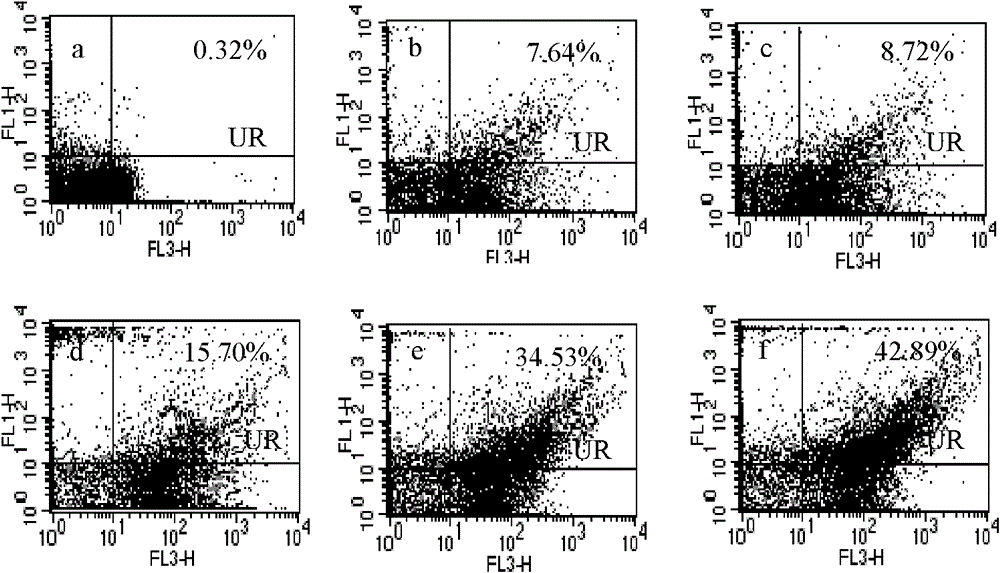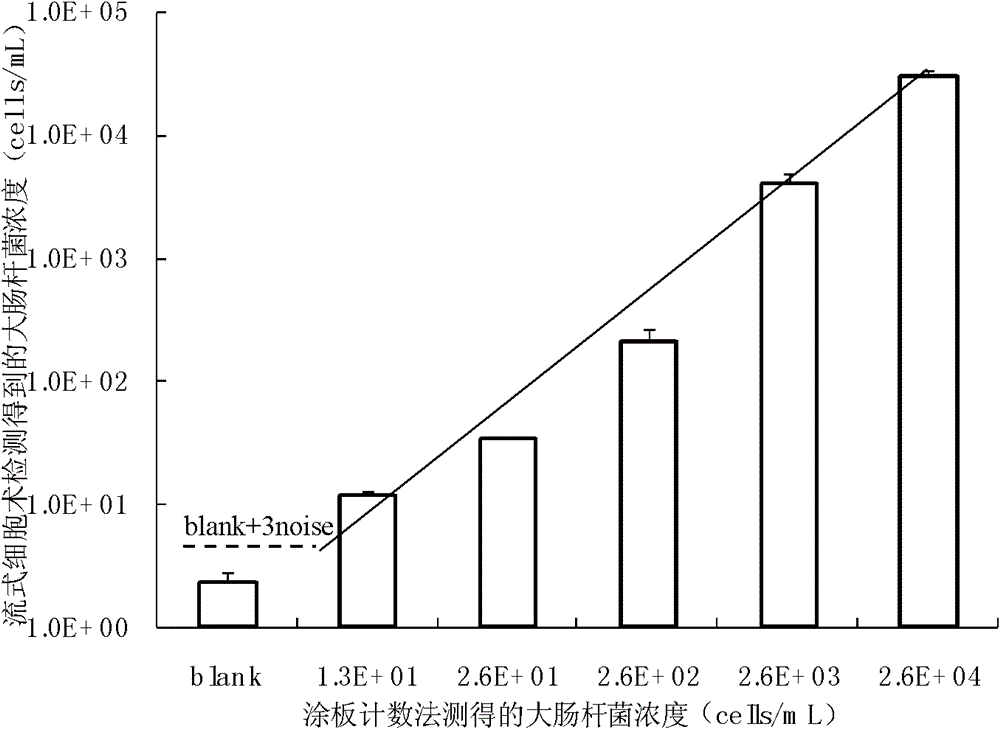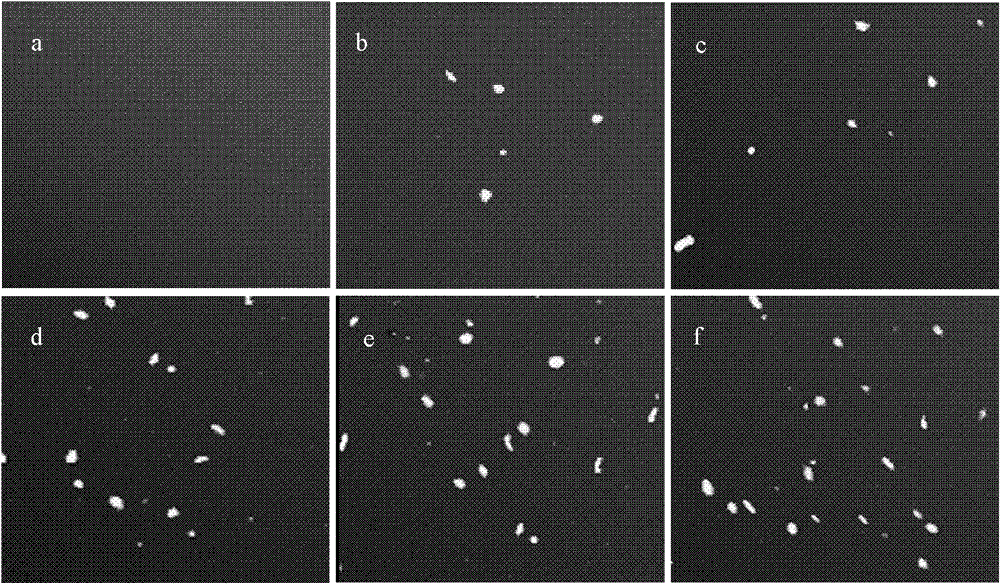Method for detecting the colon bacillus by combining magnetic nanoparticle enrichment with bi-color flow cytometry
A technology of magnetic nanoparticles and Escherichia coli, which is applied in the direction of individual particle analysis, chemical instruments and methods, particle and sedimentation analysis, etc., can solve problems such as difficulties and false positive signals, and achieve improved accuracy, high detection sensitivity, and reduced false positives. The effect of positive signals
- Summary
- Abstract
- Description
- Claims
- Application Information
AI Technical Summary
Problems solved by technology
Method used
Image
Examples
Embodiment
[0043] Application of the detection method of the present invention in the detection of Escherichia coli O157:H7
[0044] 1. Capture and enrichment of E.coli O157:H7 by magnetic nanoparticles
[0045] The preparation concentration is 2.6×10 6 cells / mL, 2.6×10 5 cells / mL, 2.6×10 4 cells / mL, 2.6×10 3 cells / mL, 1.3×10 3 cells / mL of E.coli O157:H7 bacterial suspension, incubate each bacterial suspension with concanavalin A at 35°C-37°C for 1 hour, centrifuge and wash twice; then take 6 centrifuge tubes with a volume of 10mL (the numbers are respectively a, b, c, d, e, f), respectively add the following bacterial suspension and PB buffer solution to each tube to prepare the samples to be tested with gradient concentration, and add 100 μL to each centrifuge tube at the same time Silica-coated aminated magnetic nanoparticles with surface-modified mannose (the transmission electron microscope image of the magnetic nanoparticles is shown in Figure 4 shown), the material composit...
PUM
 Login to View More
Login to View More Abstract
Description
Claims
Application Information
 Login to View More
Login to View More - R&D
- Intellectual Property
- Life Sciences
- Materials
- Tech Scout
- Unparalleled Data Quality
- Higher Quality Content
- 60% Fewer Hallucinations
Browse by: Latest US Patents, China's latest patents, Technical Efficacy Thesaurus, Application Domain, Technology Topic, Popular Technical Reports.
© 2025 PatSnap. All rights reserved.Legal|Privacy policy|Modern Slavery Act Transparency Statement|Sitemap|About US| Contact US: help@patsnap.com



